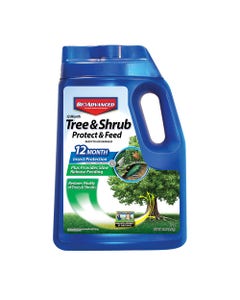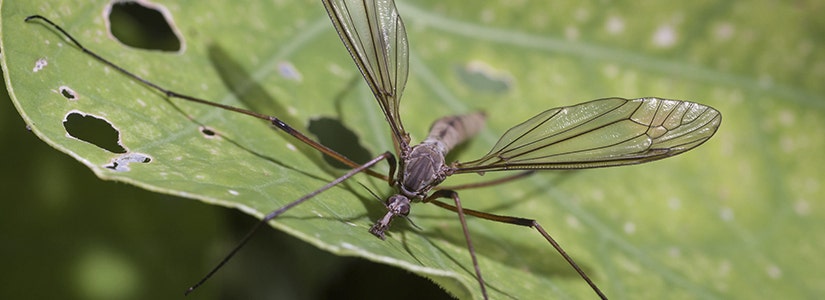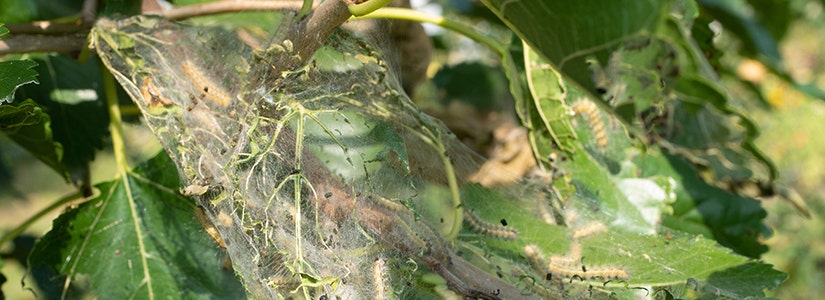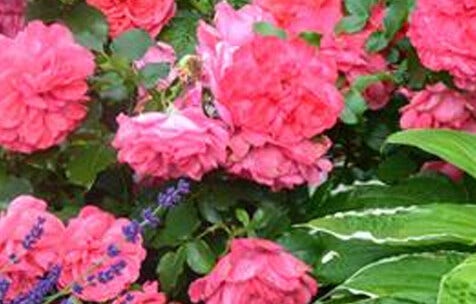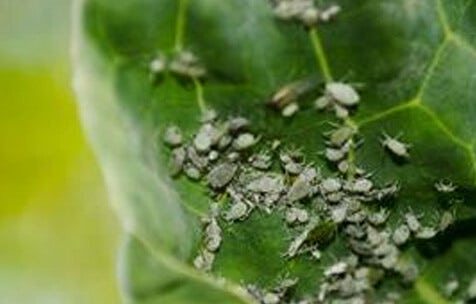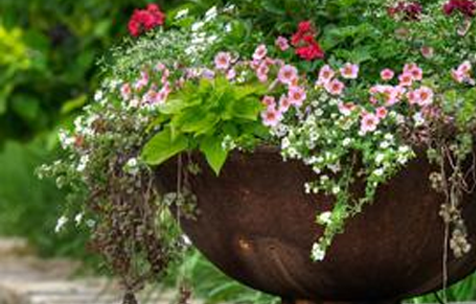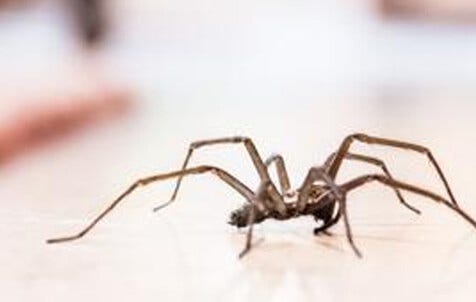

- Home
- Solution Center
- Learn
- Outdoor Pests
- Top 5 Summer Landscape Pests
Top 5 Summer Landscape Pests
The arrival of summer often opens the door for outdoor dining, including picnic lunches and supper under the stars. Unfortunately, many pests spend the season indulging in their own al fresco feasts –in your garden. Get the jump on some of summer's most common landscape pests by learning signs and symptoms of attack.

Spider Mites
It's tough to spot these summer landscape pests –they're only 1/70 to 1/50 inch long. What you'll most likely see are signs of feeding: silvery stipples or spots on leaves. Many Spider Mites produce webbing, which is frequently visible on leaf undersides or, in severe infestations, drapes between leaves and stems.
Spider Mites suck plant juices and produce sticky honeydew, which attracts Ants and may host black sooty mold, another common summer landscape pest. Most Spider Mites flourish in hot, dry weather and reproduce quickly. Drought-stressed or dusty plants tend to be targets for attack and leaves can become web-encased overnight. Spruce Spider Mites attack in cooler seasons of spring and fall.
Other signs of Spider Mites: Leaves appear dull and may bronze or bleach in severe infestations; curled, stunted or puckered leaves; discolored leaves fall from stems
Target plants include: Vegetables, roses, citrus, fruit trees, ornamentals

Scale insects
There are two types of scale –armored and soft. Both form colored bumps on plant stems, leaves and fruit. Scale insects feed by sucking plant juices and produce sticky honeydew that hosts black sooty mold, another serious summer landscape pest. An infested tree may produce massive amounts of honeydew that coats objects beneath with a sticky film and attracts Ants, Flies, Wasps and Bees. Ants actually will help care for soft scale pests; control Ants to help reduce scale problems.
In most cases, spraying isn't recommended to control most soft scales because beneficial insects help control these summer landscape pests.
Other signs of scale: Plants may appear water-stressed; leaves yellow and drop; tree bark can crack
Armored Scale: Has a hard outer shell; can kill trees if not controlled
Examples: San Jose Scale, Euonymus Scale, Pine Needle Scale
Target plants include: Citrus, palms, roses, currants, grapes, shade trees
Soft Scale: Has a soft body; doesn't typically kill the host
Examples: Magnolia Scale, Tulip Tree Scale, Cottony Cushion Scale
Target plants include: Citrus and other fruits, ornamental trees and shrubs

Fall Webworms
These Caterpillars congregate at tips of tree branches, spinning silken webs. The gray-haired, black-spotted Caterpillars may be yellow-green with a black head or tan with a red head.
Worms feast inside webbing, increasing nest size as they grow. Feeding doesn't typically cause long-term harm to the tree, but the nest is unsightly and may reach up to 3 feet across by late summer.
Other signs of Fall Webworms: Caterpillars gathering at branch tips; webbing surrounding branch tips; also watch for webs on branch tips of garden plants
Target plants include: Nearly every tree except conifers can be infested by these summer landscape pests; favorites are mulberry, elm, sweet gum, willow, oak, linden, apple and other fruit trees

Whiteflies
Whiteflies swarm up in clouds when infested plants are disturbed. These tiny (1/20 inch long) flying insects are related to Aphids and feed by sucking plant juices. Adults fly; immature forms feed on leaf undersides. Whiteflies reproduce rapidly once summer heat arrives and can be annoying summer landscape pests. Drought stress intensifies infestations.
Other signs of Whiteflies: Curled, stunted, stippled or puckered leaves; feeding produces honeydew, a sticky substance that hosts black sooty mold and attracts Ants; leaves of squash-family plants turn silvery
Target plants include: Ornamental plants; whiteflies frequently attack Coleus, Fuchsia, Sweet Potato (edible and ornamental), Tomato, Grapes, Citrus and Squash-family plants

Grasshoppers
Dressed in shades of green and brown, these well-known jumpers have large, chewing jaws that can make quick work of landscape plants when large numbers are present. These insects aren't picky, eating weeds and ornamental crops. Grasshoppers feed during the day, chewing leaves and stems. Natural predators include toads, skunks, coyotes and hornets.
Other signs of Grasshoppers: Ragged edges on leaves; leaf margins may have semicircular holes along margins; chewed areas develop brown edges
Target plants include: Weeds, grass, clovers; in droughty seasons when weeds are scarce, Grasshoppers are a more serious summer landscape pest
PHOTOS
Image 5361242: Frank Peairs, Colorado State University, Bugwood.orgImage 5439062: Chazz Hesselein, Alabama Cooperative Extension System, Bugwood.orgImage 5361242: Frank Peairs, Colorado State University, Bugwood.org

